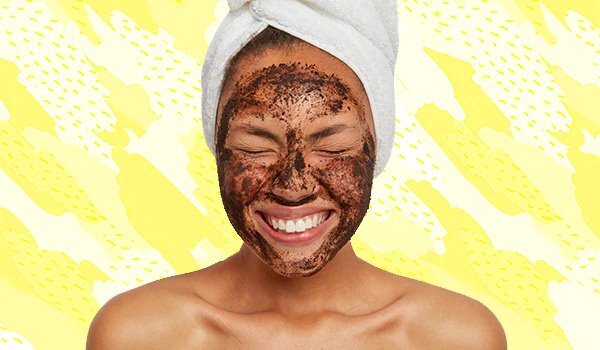Curious as to what this scrubbing technique is and how it can get you glowing skin that you've been dreaming of? Well, let's get into the nitty gritty and learn how to exfoliate skin easily.
Ever wondered how to exfoliate skin at home? It is one of the easiest ways to remove everyday grime, regenerate skin cells and bring a glow to your face. The sun, pollution, dead skin, blackheads, acne and other such problems can easily make your skin look dull. Simply exfoliate them away and we are here to tell you the best way to do it!
01Exfoliate skin at home - the basics
Filters are great but showing off your natural skin texture on Instagram is a different type of flex.
And if you take good care of your skin, it will definitely show. Get started on it with a simple CTM routine which includes a cleanser, toner and moisturiser. But on some days, you can do with a little more and that's where exfoliation comes into place.
While exfoliation is not a new concept, many of us still don't seem to get it right or skip it altogether. To understand the benefits of exfoliation and how to do it right, let's understand what it exactly is and how to exfoliate skin at home.
02What is exfoliation?

Every few days, your skin sheds dead skin to make way for a new layer. The dead skin cells remain on your face and leads to issues like clogged pores, dry patches, white flakes and breakouts. If left untreated, these clogged pores could turn into cystic acne. To avoid all these, you must exfoliate your skin two to three times a week. It helps get rid of the dead skin cells, makes your skin even and smooth, unclogs the pores, stimulates collagen production and reduces fine lines as well.
Choose your exfoliant
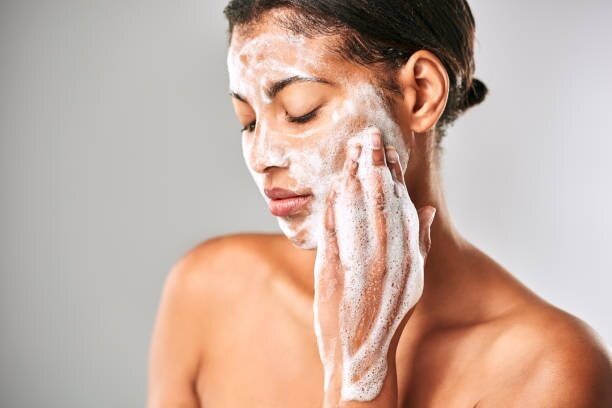
Scrubbing your skin is the only way to get back your original glow, even your skin tone and help with blood circulation. When learning how to exfoliate skin at first, do it once a week. Once you're used to it, you can stick to scrubbing your face once a week if you have regular or oily skin and once in 10 days if you have dry and sensitive skin.
For beginners, St. Ives Fresh Skin Apricot Scrub is the best solution to get started. It controls excess oil production and roots out grime, dirt and dead skin cells that may have clogged your pores. The apricot in it deeply purifies your skin while improving skin texture. Meanwhile, the salicylic acid prevents sebum build-up in the first place so you won't have to worry about new acne. It is also gentle on the skin and doesn't contain any abrasive particles leaving you feeling refreshed immediately.
How to exfoliate at home
Before you begin, it's best to exfoliate your skin at night to avoid sun exposure on a fresh layer of skin that may be tender after exfoliation.
Step 1 - Wash your skin with a cleanser that suits your skin type to remove all your makeup and impurities.
Step 2 - Apply the scrub with dry fingertips to a clean but damp face, carefully avoiding the area near your eyes.
Step 3 - Next, wet your fingertips and massage the scrub around your face in a circular motion for a few minutes. Beauty expert and Education Head Hinaa Khan advises against rubbing the exfoliant too vigorously on your skin as it can cause irritation and stinging feelings on your skin.
Step 4 - Wash off with lukewarm water and follow up with a toner and moisturiser.
03How to exfoliate naturally
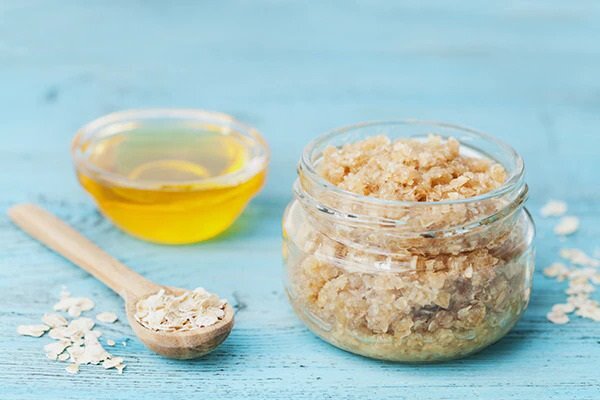
But if you love a challenge, here's how to exfoliate skin at home with natural scrubs. Dealing with a moody skin type isn't easy. You experience a minor weather change or try a new ingredient or product or simply breathe, and it starts acting up. Picking an exfoliator for sensitive skin type is a real task though. You need to use mild ingredients that don't leave your face red, irritated and itchy. So, to make life easier, you can always make these scrubs with items lying around your kitchen!
Honey and oatmeal
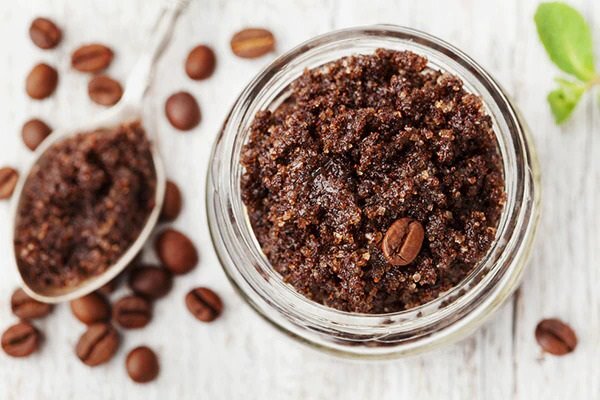
Honey and oatmeal are both super calming and nourishing ingredients that exfoliate your skin gently. While oatmeal soothes the skin, honey leaves it bright and glowing.
- Grind two tablespoons of oatmeal and add two tablespoons of organic honey to it.
- Mix the two ingredients and massage them on your face gently.
- Rinse it off and moisturise. Do it once a week. But let's be honest, concocting a face scrub every time before you want to use it can be a little cumbersome. Hence, if you want something that's readily available each time you want to use it go for the St. Ives Gentle Smoothing Oatmeal Scrub and Mask . Enriched with oatmeal and honey, this face scrub sloughs away dead skin cells as well as delivers your skin with oodles of nourishment.
Coffee and coconut oil
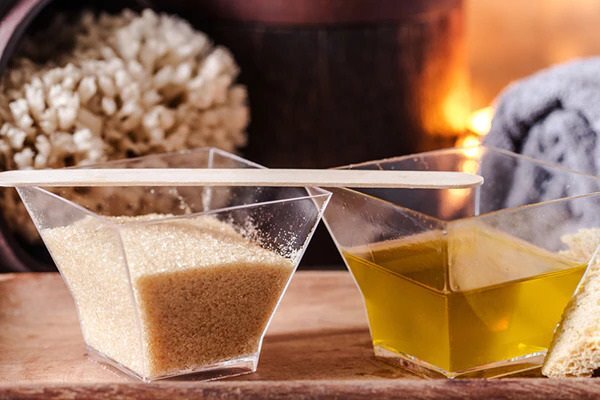
Ground coffee helps exfoliate skin and remove dead skin cells, excess oil and deep-settled impurities on the face. Coconut oil, on the other hand, moisturises and reduces itchiness, redness and rash.
- Mix equal amounts of finely ground coffee and extra virgin coconut oil.
- Apply the scrub on your face generously. Massage for a few minutes.
- Wash your face with lukewarm water. You can follow up with a moisturiser and repeat this routine weekly. The St. Ives Energizing Coconut and Coffee Scrubdelivers the same results, just a tad bit faster and more effectively. It provides deep exfoliation to your skin without being even a tiny bit harsh and leaves your skin super smooth and nourished.
Brown sugar and olive oil
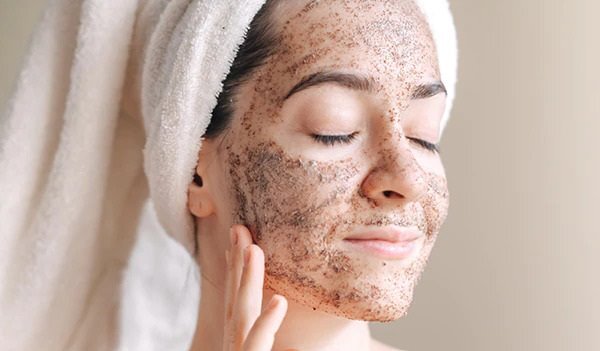
Brown sugar is finer and thus softer than refined white sugar. It is a better option to include in a facial scrub if you have sensitive skin or acne while olive oil nourishes dry skin. It will also soothe skin irritation and lend a healthy glow.
- Mix two tablespoons of brown sugar with a tablespoon of olive oil and make a smooth paste.
- Use it as a scrub and gently massage it for a few minutes.
- Rinse it off with water. You can use this DIY scrub once or twice a week. But if you want the same results but quickly, opt for the St. Ives Radiant Skin Pink Lemon and Mandarin Orange Scrub. This amazing scrub not only lifts away dead skin cells to give your skin a radiant glow but is super gentle on the skin and is perfect for anyone with sensitive skin.
04Do’s and don’ts of exfoliating
One of the biggest mistakes we make while scrubbing is over-exfoliating our skin. This can lead to skin hypersensitivity and can cause serious damage to the skin. Hinaa Khan has listed down a few more things to keep in mind if you are figuring out how to exfoliate skin.
The 72 hours rule: Make sure you don't exfoliate after bleaching, using face wax, facial treatment or threading for at least 72 hours as your skin is very sensitive at that time.
Night magic: It is best to exfoliate your skin at night. This helps avoid sun exposure on the fresh layer of skin that you achieve after exfoliation.
**Never exfoliate irritated skin: **Avoid exfoliating your skin if you have developed irritation, sensitivity, sunburn, pustular or active acne or broken skin. It is best to let the skin recover and then restart exfoliation.
**Avoid after having a skin treatment done: **Make sure you don't exfoliate your skin after undergoing skin treatments like chemical peels, microdermabrasion, laser or any other resurfacing treatments until your skin has recovered and healed properly. Also, avoid scrubbing if you are using medically prescribed exfoliating creams, gels etc.
Sun sensitivity: Make sure you take a gap of seven days before and after a sunny beach holiday to exfoliate your skin as there might be sun damage on your skin that might get aggravated due to scrubbing. Also, make sure you use sunscreen daily to protect your skin from harmful sun rays.
**Read the label: **We often ignore it, but it is actually pretty helpful to follow directions of use written on the products that we use thoroughly to maximise your exfoliating experience.
Now that you know how to exfoliate skin, what are you waiting for? Get to achieving that glowing skin you deserve in the comfort of your home!

